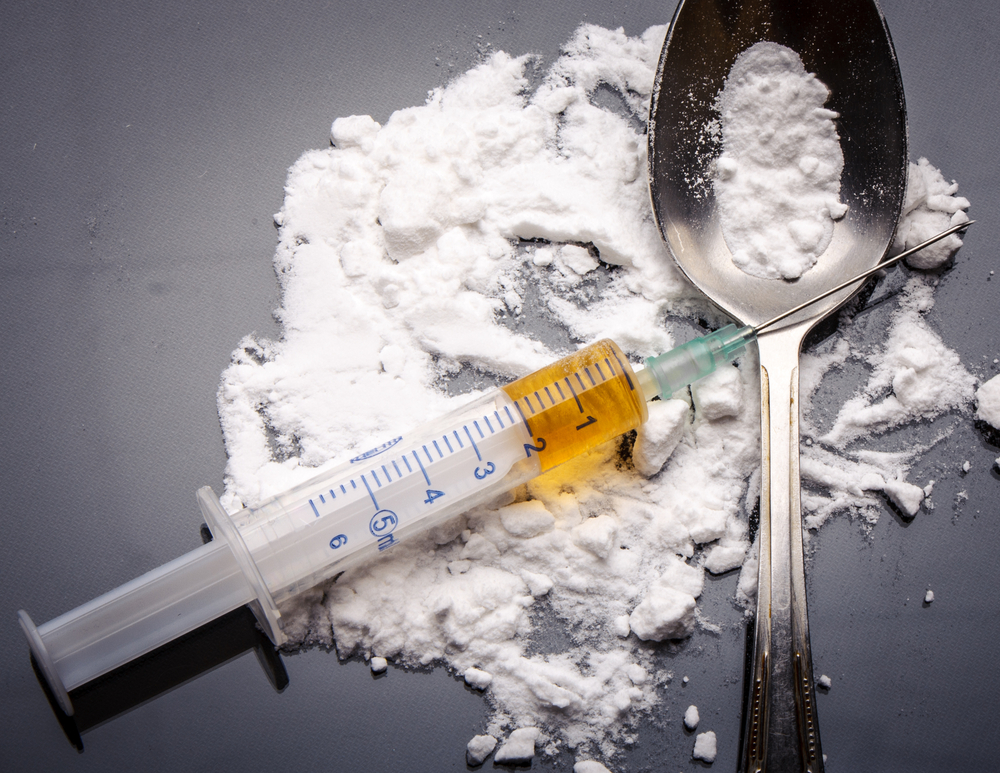Who Uses Heroin? Not Who You Might Think

The profile of the typical heroin user has changed over the past 50 years, a new study suggests.
In the 1960s and 1970s, heroin users were primarily inner-city young men from minority groups. But today, the people most likely to get hooked on heroinare white men and women in their late 20s living outside large urban areas, the researchers report.
"We used to think that heroin use was confined to a small area in the inner cities among minority populations," said study author Theodore J. Cicero, a professor of psychiatry at Washington University in St. Louis. "But it's moved beyond that, to the suburbs and rural areas."
As heroin use has moved from predominantly lower-income urban locations to middle-class suburbs and rural communities, the public health issue of heroin addiction has become more widespread. (Heroin use is still a problem among lower-income city men.) [10 Easy Paths to Self-Destruction]
The findings were published online yesterday (May 28) in the journal JAMA Psychiatry.
Emerging trends
In the study, the researchers analyzed survey data from nearly 2,800 men and women throughout the United States who had sought treatment for their heroin addiction. Cicero and his colleagues wanted to determine who was using heroin, why they were using it and how patterns of opioid abuse (heroin or prescription opioids) had changed over the past five decades.
Sign up for the Live Science daily newsletter now
Get the world’s most fascinating discoveries delivered straight to your inbox.
One new trend emerged along racial lines: White individuals made up approximately 90 percent of the study participants who began using heroin in the last decade.
Gender-based differences were also seen: Men represented slightly more than 80 percent of heroin users who began their opioid abuse in the 1960s, according to the study. But by 2010, nearly equal numbers of male and female heroin users were seeking treatment.
The analysis also found that heroin users are getting a little older. The age of first use of heroin or any opioid has gradually increased, from age 16 in the 1960s to 23 in 2010.
Many of these "new" heroin users were once prescription-drug abusers. In middle-class areas, Cicero explained, people were using prescription opioids — such as OxyContin, Vicodin and Percocet — to get high with increasing frequency since the 1990s. But in 2010, when drug manufacturers introduced an abuse-deterrent formulation of OxyContinthat made it harder for addicts to extract the active drug to inject or inhale, prescription painkillersbecame more expensive and difficult to obtain.
As a result, heroin use became the cheaper and more accessible alternative to prescription opioids, Cicero said. "Heroin use is following prescription drug abuse," he told Live Science.
Getting hooked
The study results showed that 75 percent of the more recent users of heroin said they were first introduced to opioids through prescription drugs, such as OxyContin.
A nearly opposite pattern was found in the 1960s: More than 80 percent of the study participants who started using heroin during that decade said heroin was the first opioid drug they experimented with and got hooked on.
Prescription opioid use may have seemed safer for some abusers, because the drug's sterility — street drugs can be contaminated with toxic substances — and dose were known, Cicero said. As heroin use grows, so do the dangers of drug abuse, because the drug's purity and strength aren't known, thus increasing a person's chances of overdose and death, according to Cicero.
"We need to change the manner in which we focus on the drug problem," Cicero said. He pointed out that U.S. drug policy has mainly addressed the supply side of the equation and ignored the demand side.
Focusing more on the demand side means answering some tough questions, such as why so many people are turning to opioid drugs, and what makes these drugs so attractive to users, Cicero said.
Follow us @LiveScience, Facebook & Google+. Original article on Live Science.
Cari Nierenberg has been writing about health and wellness topics for online news outlets and print publications for more than two decades. Her work has been published by Live Science, The Washington Post, WebMD, Scientific American, among others. She has a Bachelor of Science degree in nutrition from Cornell University and a Master of Science degree in Nutrition and Communication from Boston University.
What are mRNA vaccines, and how do they work?
Deadly motor-neuron disease treated in the womb in world 1st









